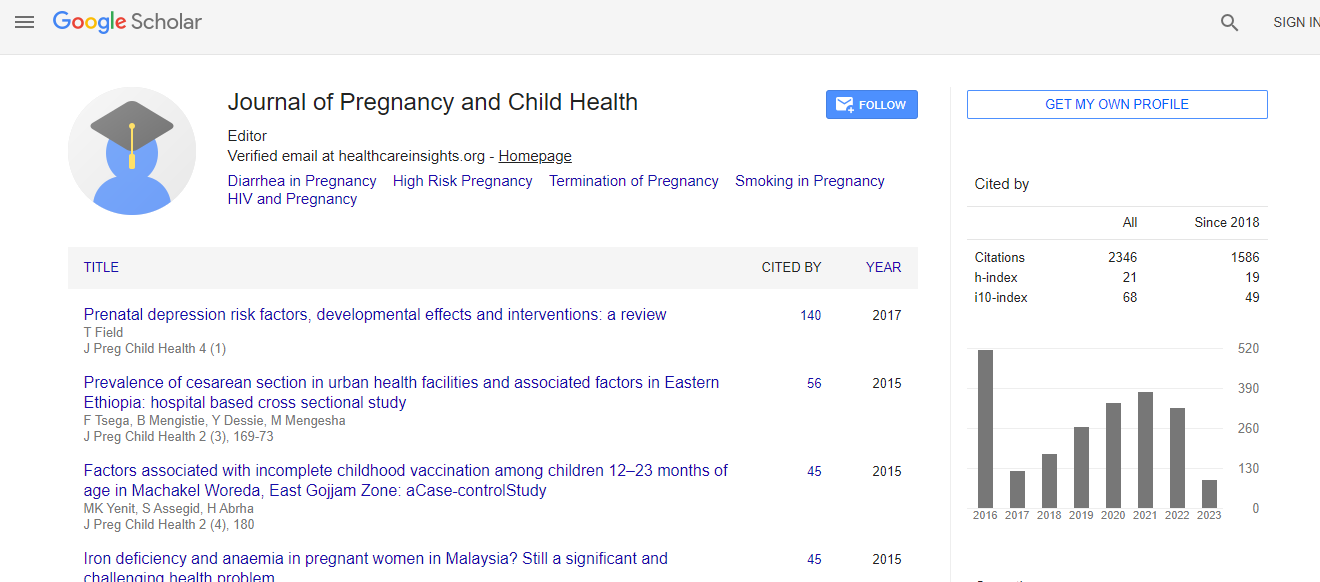Research Article
The Effect of Primary Cesarean Section on Subsequent Delivery
| Elie Nkwabong 1*, Kayawa Monglo Stéphane2 and Mbu Robinson Enow3 | |
| 1Senior lecturer; Department of Obstetrics & Gynecology; University Teaching Hospital/ Faculty of Medicine and Biomedical Sciences, Yaoundé (Cameroon) | |
| 2Faculty of Medicine and Biomedical Sciences, Yaoundé (Cameroon) | |
| 3Associate professor; Department of Obstetrics & Gynecology; Faculty of Medicine and Biomedical Sciences, Yaoundé (Cameroon) | |
| Corresponding Author : | Dr. Elie Nkwabong Department of Obstetrics & Gynecology P.O. Box 1364 Yaoundé, Cameroon Tel: 237 699663843 Fax: 237 222312567 E-mail: enkwabong@yahoo.fr |
| Received September 23, 2014; Accepted January 26, 2015; Published January 27, 2015 | |
| Citation: Nkwabong E, Kayawa Monglo S, Mbu RE (2015) The Effect of Primary Cesarean Section on Subsequent Delivery. J Preg Child Health 2:129. doi: 10.4172/2376-127X.1000129 | |
| Copyright: © 2015 Nkwabong E, et al. This is an open-access article distributed under the terms of the Creative Commons Attribution License, which permits unrestricted use, distribution, and reproduction in any medium, provided the original author and source are credited. | |
Abstract
Objective: To evaluate the effect of the first cesarean section (CS) on the subsequent delivery.
Methods: This prospective cohort study was carried out in two major hospitals of Yaoundé, Cameroon, from November 1st, 2013 to April 30th, 2014. Maternity records at second delivery of parturient whose first delivery was done by CS (primary CS) or vaginally was compared. The main variables recorded included maternal age, intergenesic period, gestational age at delivery, mode of delivery, birth weight, uterine rupture and post-partum haemorrhage. Data were analyzed using Epi info 3.5.4. Fisher exact test and t-test were used for comparison. P<0.05 was considered statistically significant.
Results: There was no statistically significant difference between means concerning maternal ages, intergenesic periods, gestational ages at delivery and birth weights. Women with primary CS had an increased risk of uterine rupture (one case versus none), repeat CS (RR 5.1, 95%CI 2.5-10.4, P<0.0001) and post partum bleeding ≥500ml (RR 6.3, 95%CI 2.0-20.0, P<0.0002).
Conclusion: Primary cesarean delivery was associated with a higher risk of repeat CS. Given that repeat CS is associated with subsequent elective CS, efforts should concentrate mainly on the reduction of primary CS rate to reverse the rising CS rate.

 Spanish
Spanish  Chinese
Chinese  Russian
Russian  German
German  French
French  Japanese
Japanese  Portuguese
Portuguese  Hindi
Hindi 
